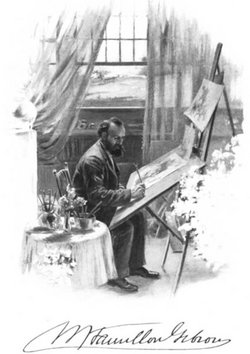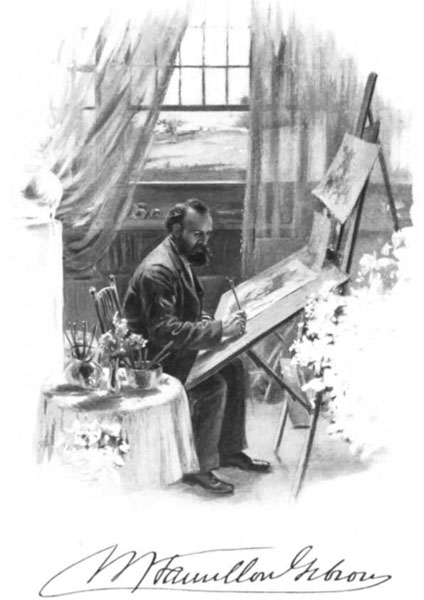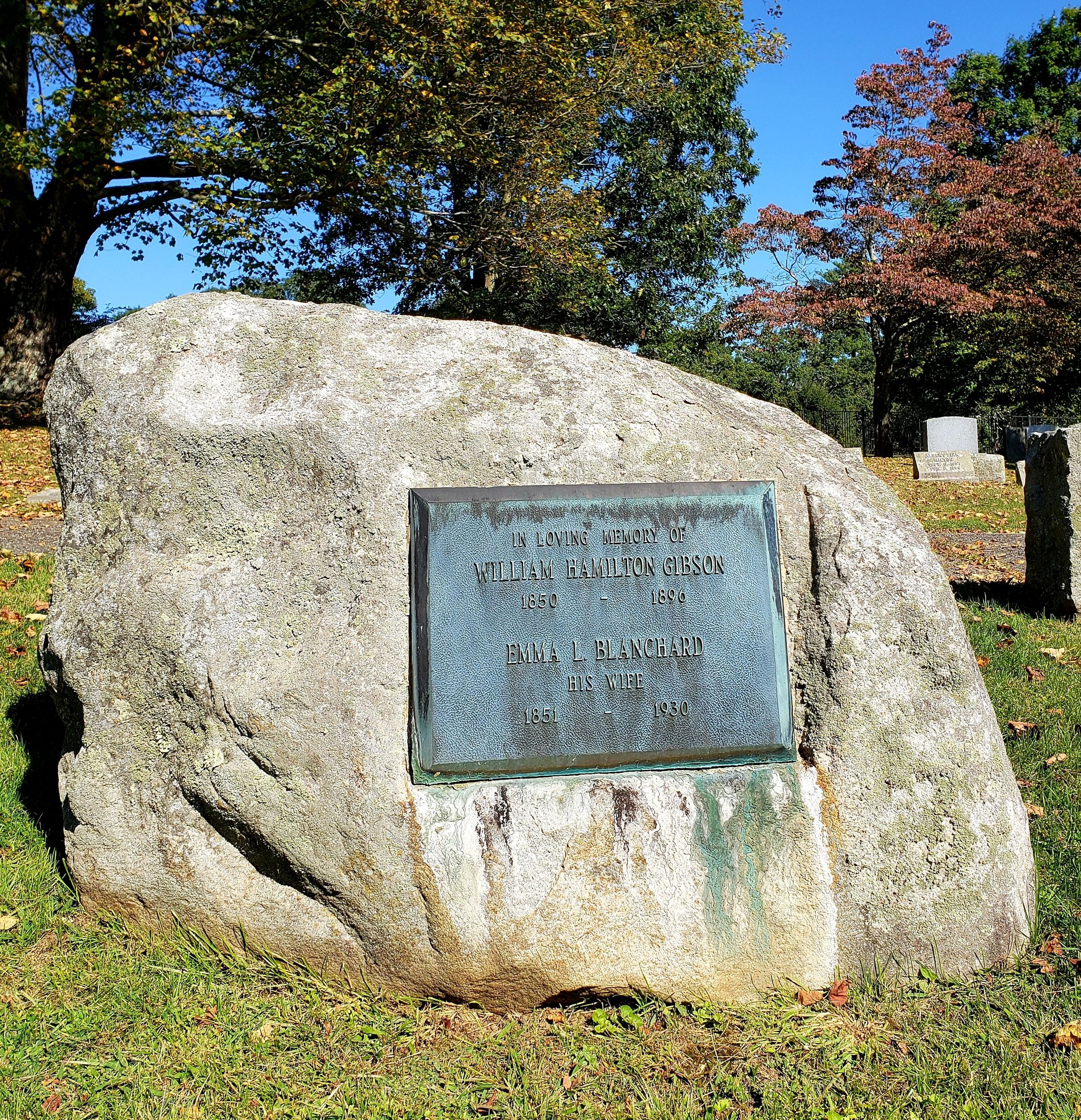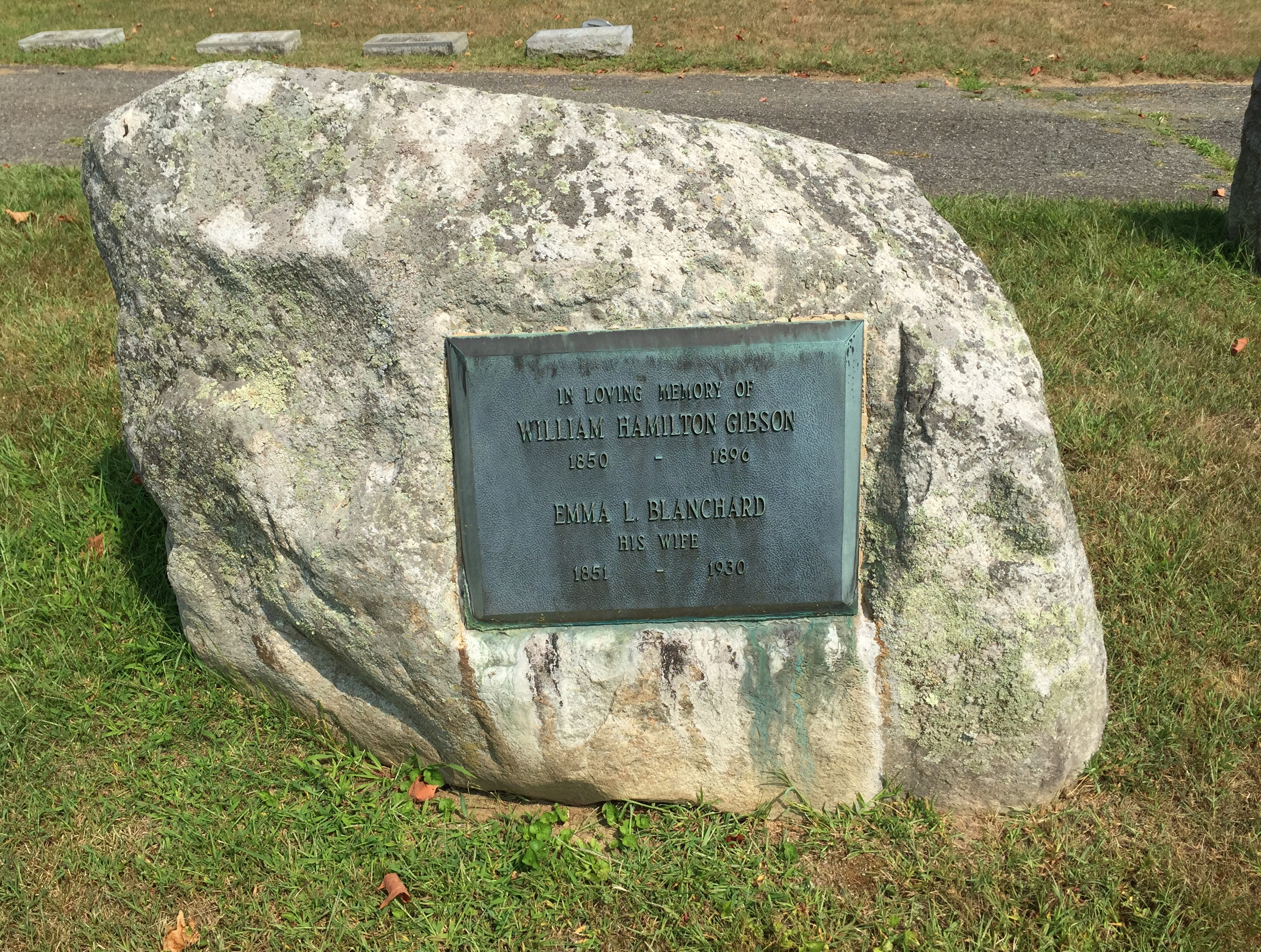He attended the 'Gunnery' School, a preparatory academy at Washington, Conn. at the age of ten, and later entered the Brooklyn Polytechnic Institute.
His father's death in 1868, combined with the post-Civil War recession, forced him to give up his studies and earn his way in the world. Initially, he went into the insurance business, but abandoned it in under a year.
Drawn to the natural world and a gifted illustrator, he was soon doing work for major magazines, including 'Harper's Monthly.' He also became a popular lecturer on natural history.
While he lived and worked in Brooklyn, he kept a summer studio at Washington. His delightful book, "My Studio Neighbors," is about the wildlife that surrounded him at his country studio. While filled with illustrations, his words are what bring Nature herself alive for the reader.
In addition to his magazine work, his published books include Pastoral Days, Highways and Byways, Strolls by Sunlight and Starlight, and Our Native Orchids. He was also an avid artist, and exhibited his paintings in the US and London.
He married Emma Ludlow Blanchard on October 31, 1878 at the Clinton Avenue Congregational Church in Brooklyn, by the Rev. Henry W. Beecher. They had two sons, William Harrison, Jr. and Dana Blanchard.
'The Sumacs,' his country home in Washington, was completed in 1894 and it was to there he retired for a rest when he began feeling unwell in 1896. On the evening of July 16, he had walked into town to collect the mail when he was suddenly taken ill, and died of a stroke before his friends could return him to his home.
At his funeral, it was recounted that over the years he had many times invited wild birds to land on his outstretched hand, and they had willingly done so to the amazement of everyone present. Given his love for nature, it's no surprise that he chose a boulder rather than a man-made stone to mark his resting place.
He attended the 'Gunnery' School, a preparatory academy at Washington, Conn. at the age of ten, and later entered the Brooklyn Polytechnic Institute.
His father's death in 1868, combined with the post-Civil War recession, forced him to give up his studies and earn his way in the world. Initially, he went into the insurance business, but abandoned it in under a year.
Drawn to the natural world and a gifted illustrator, he was soon doing work for major magazines, including 'Harper's Monthly.' He also became a popular lecturer on natural history.
While he lived and worked in Brooklyn, he kept a summer studio at Washington. His delightful book, "My Studio Neighbors," is about the wildlife that surrounded him at his country studio. While filled with illustrations, his words are what bring Nature herself alive for the reader.
In addition to his magazine work, his published books include Pastoral Days, Highways and Byways, Strolls by Sunlight and Starlight, and Our Native Orchids. He was also an avid artist, and exhibited his paintings in the US and London.
He married Emma Ludlow Blanchard on October 31, 1878 at the Clinton Avenue Congregational Church in Brooklyn, by the Rev. Henry W. Beecher. They had two sons, William Harrison, Jr. and Dana Blanchard.
'The Sumacs,' his country home in Washington, was completed in 1894 and it was to there he retired for a rest when he began feeling unwell in 1896. On the evening of July 16, he had walked into town to collect the mail when he was suddenly taken ill, and died of a stroke before his friends could return him to his home.
At his funeral, it was recounted that over the years he had many times invited wild birds to land on his outstretched hand, and they had willingly done so to the amazement of everyone present. Given his love for nature, it's no surprise that he chose a boulder rather than a man-made stone to mark his resting place.
Inscription
In loving Memory of William Hamilton Gibson
1850-1896
Emma L. Blanchard his wife
1851-1930
Family Members
Advertisement
Records on Ancestry
Advertisement









